Rumble: The fortune we had... (11)
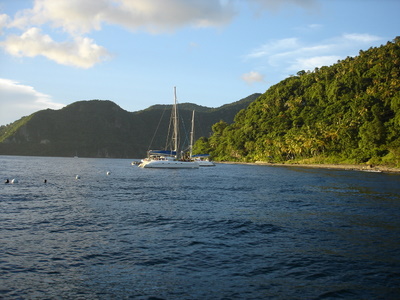
Our anchorage near The Pitons - St.Lucia (2005).
Life as a serial expat, addicted traveller, desperate adventurer, wannabe sailor and passionate aidworker

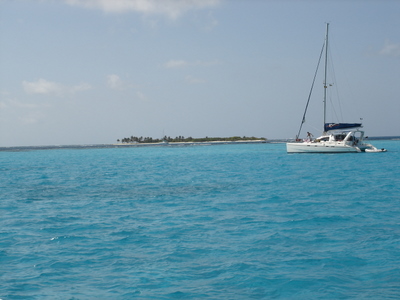


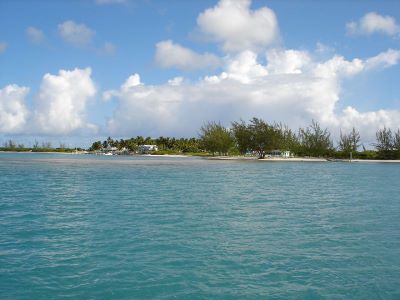
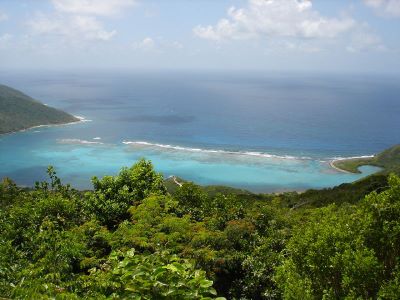
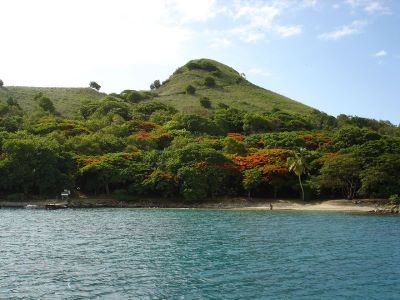
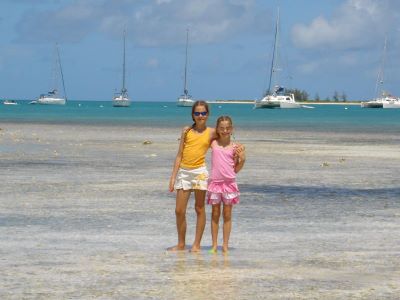
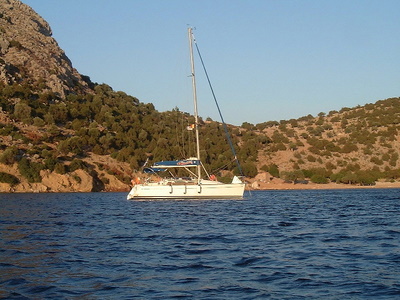
Thanks to Aaron, the One and Only True picture of the Iranian missile tests has been revealed:

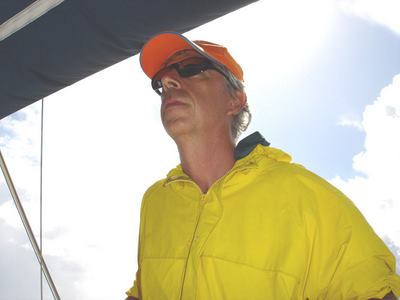
People sometimes get an idealistic idea about how it is to sail a yacht. True, I love sailing. I love the ocean, the freedom, even just the idea of moving on an endless sea merely pushed forward by wind and tides.
But when I go sailing with the family, it is different. Up comes the endless feeling of responsibility. In our family of four, I am the only one who knows how to sail a yacht. Tine, my wife, knows how to assist maneuvering a yacht in a harbour, and helps me steering the boat against the wind when I raise the sails, and she picks up a mooring buoy like no other, but she does not know how to sail. Our daughters, Lana (now 13) and Hannah (nearly 11), know how to sail a dinghy, but not a yacht.
So my nightmare is "what if something happens to me, while we are under sail"... Imagine for one or the other silly reason, I fall overboard - accidents happen on a yacht -, what then? Or even if it is just when getting into bad weather, where I would need skilled hands?
It is different if you have a crew that knows what to do. As the skipper, you stay on the helm and give simple orders: "Trim the main sail", "reef the foresail", "look up the course to the nearest port"... But when we sail with the family, it is different.
Even though I take every possible precaution to ensure the safety of my loved ones: I have taken every possible course. I have quite some experience in bad weather, in strong tides, sailing in busy commercial shipping lanes, sailing at night, and maneuvering in busy ports. I know how to read weather charts, calculate tides, and all radio procedures. I know first aid, and emergency procedures. I know how to anchor a ship, pick up a man over board, and maneuver in tight quarters. And still, when sailing with the family I always get nervous.
Let me tell you a story how fast things could go wrong.
Back in 2004, we sailed from in the Caribbean from Martinique to the Grenadines. One morning, we lift anchor from Bequia in the Grenadines, to sail to St.Lucia, about 60-70 nautical miles further North. The weather was nice and the forecast was perfect. I made one mistake: I calculated the trip to be a bit shorter if we passed St.Vincent -the next island North of Bequia- via the East, the Atlantic side, rather than the quieter Caribbean (East) side.
When we cut between Bequia and St.Vincent, the weather turned overcast, but the winds and the seas were quite calm. As we sailed past St.Vincent's East side, the wind picked up to about 15 knots, still quite easy, even though I could see some isolated squalls coming our way. I kept an eye on them and changed course regularly to pass in front or in the back of them. As we sailed along, we saw the skies getting darker, and I did not have a comfortable feeling. I put in a reef in the main sail, just in case, but did not get too worried until I saw a real dark squall heading our way, just as we were getting close to the North of St.Vincent.
I ordered the family to put on their life jackets, and clipped the kids with a lifeline onto the ship. I clipped myself onto the lifeline, put the ship on autopilot and went to the bow of the ship to put in the third reef in the main sail. Just as I stood hooked onto the main mast, it started raining, and the wind picked up. Tine dropped some of the main halyard so I could put the reef in the main sail. I got soaked by the spray and the rain. By the time I got back into the cockpit, the wind had picked up to 35 knots, turning and twisting from all sides. It was then I remembered someone warning us of the usual foul weather due to the huge mountain at the North of St.Vincent.
The sea turned into a boiling pot, with waves coming from all sides, spraying over the side of the boat, soaking my crew. We already had our rain jackets on, but it got really cold. The wind gusted from all directions, making it difficult to keep a course and to keep the sails filled, so the boat would hold a steady angle.
The rain gusted down, and the visibility was close to nil. Long had we lost sight of land. I had plotted our course, so I knew we were about five miles off land, but also knew there was no harbour this side of the island. It took probably half an hour until I realized something was wrong. The wind had shifted 90 degrees, and to keep the sails full, I had lost my bearing. The compass and my GPS indicated we were heading straight for land, sailing West instead of North...
I needed both hands at the helm, and told Tine we were getting off course. Once the going gets rough, Tine is all business. Even though I know she is not comfortable in foul weather (that is an understatement), she stood up, and told me calmly "Tell me what to do!". I told her to "take the green rope, put it over a winch clockwise, and to crank it up, until I told you to stop", an order which for an experienced crew would be "pull in the main tight". She did it perfectly. Next came "take the white and black rope, put it onto a winch, open up the clamp of the white rope, and start winching in the white and black rope", a order which would be "pull in the foresail". I revved up the engine, changed the course back to North and headed into the wind.
The wind was howling, the rain came down in buckets, and the waves gushed over the bow of the ship. We continued head-on into the wind, for what seemed an eternity, but in reality it was probably just one hour. The rain came down that violently I could see the dinghy, which we were towing behind our yacht, filling with water to the rim, slowing down the ship considerably. I kept on hoping that the engine would not fail as there was no way we would be able to sail on this course, head on into the wind. But the engine purred like a cat, and after a while the rain became lighter and all of a sudden, the kids shouted "Look there: dolphins!".
That is when I knew all would be ok. Dolphins have always been a token of good luck for me. So it was no surprise that as the pod of dolphins swam alongside the ship, the wind turned again, the rain stopped and the seas calmed down. The squall had passed us, with nothing else but clear skies ahead of us.
I put the ship on autopilot again, and pulled the dinghy closer to the yacht. I just had to heave out the water from the dinghy as it was slowing us down too much. I told Tine to keep an eye on the course, and got ready to jump into the dinghy, knowing if I would miss my jump, there was no way for me to get back onto the ship. So I jumped, heaved all water out of the dinghy, pulled myself onto the ship again, and away we were.
The silver lining of that trip came soon: the seas became dead calm, with a broad side steady wind blowing at 15 knots. I put all sails back up, and trimmed them. And boy, we sailed! With our 35 ft yacht, towing a dinghy, we sailed at 10-11 knots, at a perfect angle, and with perfectly trimmed sails for hours, until we reached St.Lucia.
The strange thing was that the kids had no idea in what danger we had been. The only thing they said "Dad that was exciting, when can we do that again?". Kids!
Some lessons learned:
- Never pass an island in the Caribbean on the Atlantic side.
- Always be prepared for the worse, and hope for the best.
- Be aware of high mountains in the vicinity of where you sail. Often the weather changes near them.
- Better one reef too much than one too little.
- Be prepared, be prepared, be prepared.
- When sailing with kids, make sure they always wear their safety jackets and are hooked onto the boat, in foul weather. You should be able to concentrate on the ship, and not have to worry where the kids are, and what they are doing.
- When things go bad, kids have to get into the habit of following orders without questioning...
More about sailing on The Road.
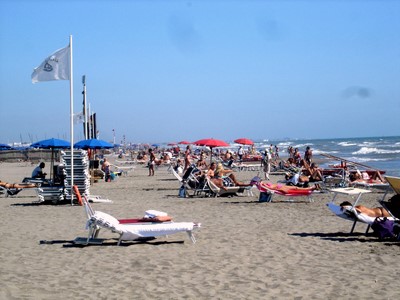
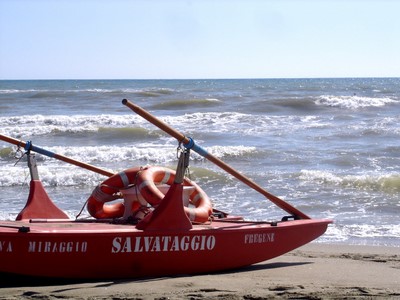
Yesterday, we had a lovely sunset at Fregene, near Rome, where I live...
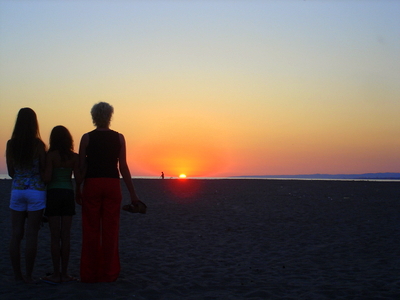
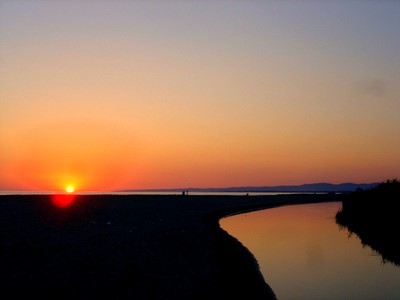
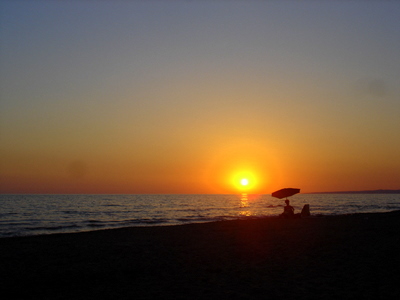
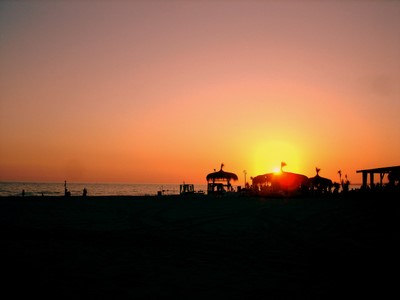
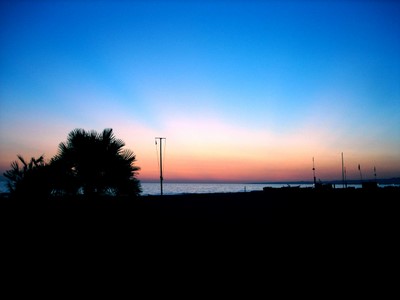
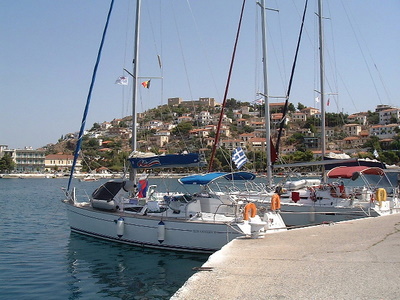
I live in Fregene, near Rome. The beach has reshaped drastically in the span of just two months:
Mid May: The beach is still deserted. The weather still has not made up its mind, with rain storms coming and going:
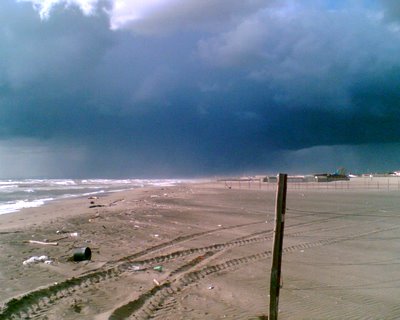
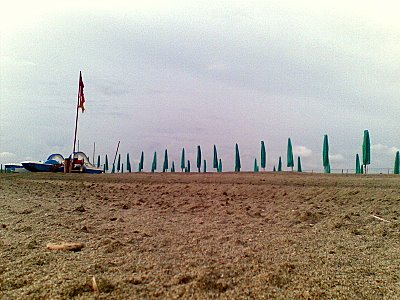
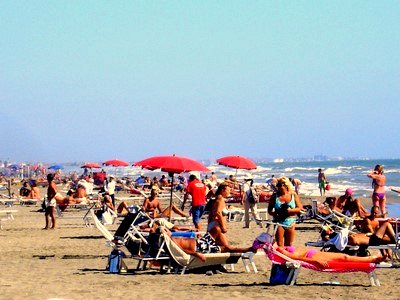
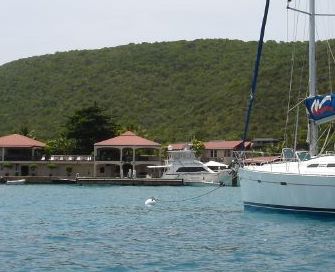
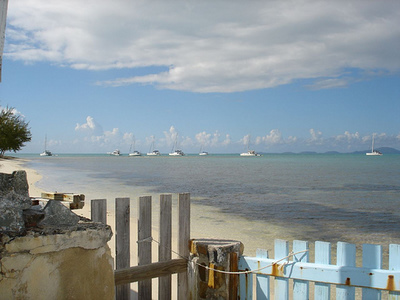
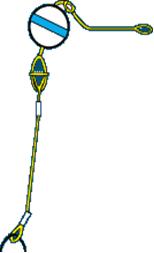 The principle of mooring, “fixing a yacht to a mooring buoy”, is pretty easy: A rope with a loop sticks out of a floating ball. The rope is connected to a chain anchored onto the sea bottom. The skipper approaches the mooring buoy against the wind while someone stands on the bow (the front end of a ship), to grab the loop with a boat hook (a long stick with a plastic hook on it). A rope is pulled through the looped mooring line, and both ends are fixed onto the bow of the ship.
The principle of mooring, “fixing a yacht to a mooring buoy”, is pretty easy: A rope with a loop sticks out of a floating ball. The rope is connected to a chain anchored onto the sea bottom. The skipper approaches the mooring buoy against the wind while someone stands on the bow (the front end of a ship), to grab the loop with a boat hook (a long stick with a plastic hook on it). A rope is pulled through the looped mooring line, and both ends are fixed onto the bow of the ship.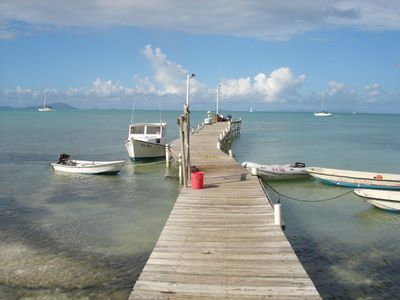


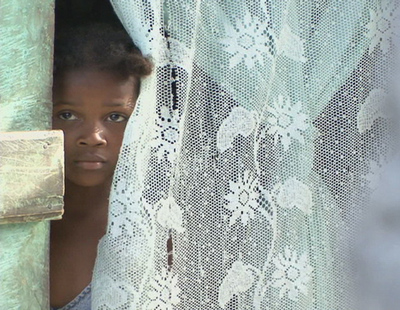
Those of you who have been following this blog for a while, know I sail.
I always wanted to sail, but never found the incentive to really get started.
In 2003, during the Iraq crisis, I was based in Dubai. Work was madness, and we put in very long hours, from 8 am until 11-12 pm every day. We all needed some physical exercise, and discovered several of us were interested in sailing.
So we took up Laser sailing in Dubai. Lasers are small skiffs, sailed single handed, but ideal to learn how to sail. We took classes with Simon, a young aggressive instructor, who gave us one Laser each. We had an hour of theory and off we went. Lasers are tricky. You don't bend forward fast enough when jibing or tacking, and boingggg.. there comes the boom against your head. You don't trim the sails well, and upside down you go. We competed amongst each other from the moment we rigged up the sails until, eight hours later, we crawled into the bar for a sunset drink. Bruised up, full of scratches, but happy. We found a new hobby!
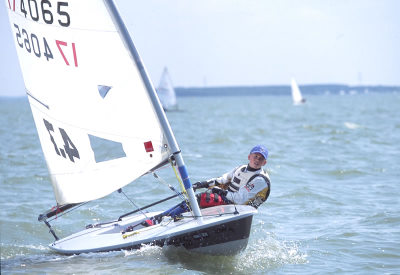
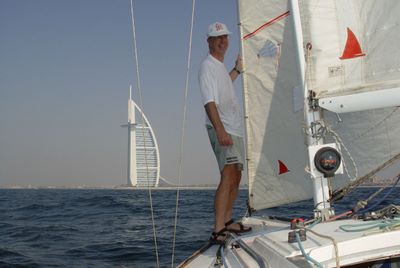
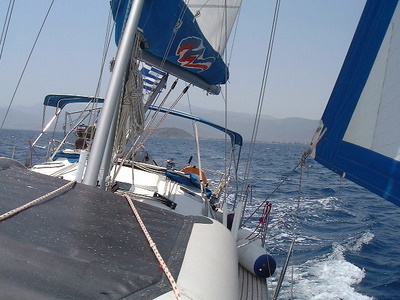


I have some catching up to do. It has been busy at work. Anyways, does not mean I have not been enjoying the things around me...
In the past two weeks, I flew to home in Belgium for a weekend, flew to Budapest for a weekend, and just landed back in Belgium. On Monday we're flying to Rome with the family: the start of the summer holidays. We will be in Rome for a week, before flying off for a month in the Seychelles.
All the flying gives plenty of inspiration... When I flew back from Belgium the weekend before last, there was heavy wind, and a dense cloud cover. I ensured I had a seat on the plane looking West, so I could snap away at sunset. Here are some of the pictures.


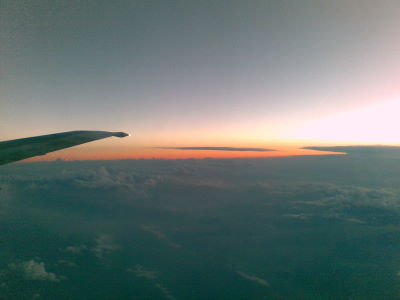

Views from my home near Rome in the early morning. It is HOT these days.. Over 30C..


© Blogger template The Business Templates by Ourblogtemplates.com 2008
Back to TOP
The Road's Dashboard
Log in
New
Edit
Customize
Dashboard